Pushkar Temple / 100g 1 of 3
Pushkar Temple / 100g 2 of 3
Pushkar Temple / 100g 3 of 3
Pushkar Temple / 50g 1 of 6
Pushkar Temple / 50g 2 of 6
Pushkar Temple / 50g 3 of 6
 This is the fourth group of six in the Pushkar Temple 50g series of incenses and is the first of three miscellaneous categories, although in this group at least some of the names hint at what the incenses are aiming for.
This is the fourth group of six in the Pushkar Temple 50g series of incenses and is the first of three miscellaneous categories, although in this group at least some of the names hint at what the incenses are aiming for.
The first one up has the only actual identifiable musk (kasturi) in the catalog. I’ve said this before but I am not entirely convinced unless it comes from the company itself that they’re using animal musk or plant-based musk, and even then there are reasons for not drawing attention to it. I say this because real animal musk is likely at a high price point these days and plant-based musk is probably more common in incenses these days. With that said I’ll leave it at that, except to say that I do notice some importers who ensure their incenses don’t harm animals often don’t have as many musk incenses in their catalogs either. My experience with real animal musk, especially in quantity is it tends to leave the same kind of space that say a skunk spray or horse barn would, it’s the kind of scent that will play with the lizard brain a little and so if you’re not experiencing something like that in an incense I’d guess it’s probably plant-based musk or at least a very small amount of animal musk.
 Kasturi musks are usually quite sweet and probably less animalic than say something like civet and so they’re used in perfumes, unfortunately too frequently (although less so with increasing ecological awareness/scarcity over the years). I think a good example of an actual kasturi musk might be the Kourindo Jyakourin Musk incense. It has that sweet note that verges noticeably animalic. Musk is supposedly in Absolute Bliss’ imported Forbidden Fruit, in the sense that it’s an incense that matches up with almost a dozen Vedic Vaani incenses, some of which are labeled Kasturi. I don’t sense much in the way of an animalic note in this incense, so it’s likely just a touch or it’s plant-based. Anyway, I ramble a bit to set up the context for the Pushkar Temple Amber Kasturi. This is a very nice incense, but I would guess right off this is likely a plant-based musk and/or used in small quantities because it doesn’t have much of a wallop to it. It is otherwise similar enough to other Amber musk mixes I have tried, almost all of which I enjoy immensely (add heena and it’s perfection). However, this doesn’t have a super well-defined musk or amber note, it’s more like a mix of the characteristics. So definitely nice, but not, say, on the level of Gokula’s Musk and Amber, this is a lot milder overall. Keep in mind, that exporters’ lack of willingness to identify musk in their incenses for the most part leaves us to guess a lot, but I do think animalic musks tend to hit really hard in incenses, and in a way are very unmistakable. No such wallop here.
Kasturi musks are usually quite sweet and probably less animalic than say something like civet and so they’re used in perfumes, unfortunately too frequently (although less so with increasing ecological awareness/scarcity over the years). I think a good example of an actual kasturi musk might be the Kourindo Jyakourin Musk incense. It has that sweet note that verges noticeably animalic. Musk is supposedly in Absolute Bliss’ imported Forbidden Fruit, in the sense that it’s an incense that matches up with almost a dozen Vedic Vaani incenses, some of which are labeled Kasturi. I don’t sense much in the way of an animalic note in this incense, so it’s likely just a touch or it’s plant-based. Anyway, I ramble a bit to set up the context for the Pushkar Temple Amber Kasturi. This is a very nice incense, but I would guess right off this is likely a plant-based musk and/or used in small quantities because it doesn’t have much of a wallop to it. It is otherwise similar enough to other Amber musk mixes I have tried, almost all of which I enjoy immensely (add heena and it’s perfection). However, this doesn’t have a super well-defined musk or amber note, it’s more like a mix of the characteristics. So definitely nice, but not, say, on the level of Gokula’s Musk and Amber, this is a lot milder overall. Keep in mind, that exporters’ lack of willingness to identify musk in their incenses for the most part leaves us to guess a lot, but I do think animalic musks tend to hit really hard in incenses, and in a way are very unmistakable. No such wallop here.
 Kohinoor may have well gone fine with the last two installments where the names of incenses tend to be more conceptual than revealing. It ended up here for no real reason. This is basically referring to one of the largest cut diamonds in the world, which really tells you nothing about the scent. It feels floral to me, but not obviously so, the oil is also sort of tangy with maybe a light touch of licorice. I’m not sure the balance works all that well, it feels somewhat astringent at times. Whatever floral is front facing escapes me largely because of all these extra subnotes. It reminds me a little of the Tulsi below in that there’s some unnamed herbal content in it as well. And tying all these things together is a kind of sweet, quasi-champa base as well. So it’s sort of like this big mix I don’t find working for me, but your mileage may vary.
Kohinoor may have well gone fine with the last two installments where the names of incenses tend to be more conceptual than revealing. It ended up here for no real reason. This is basically referring to one of the largest cut diamonds in the world, which really tells you nothing about the scent. It feels floral to me, but not obviously so, the oil is also sort of tangy with maybe a light touch of licorice. I’m not sure the balance works all that well, it feels somewhat astringent at times. Whatever floral is front facing escapes me largely because of all these extra subnotes. It reminds me a little of the Tulsi below in that there’s some unnamed herbal content in it as well. And tying all these things together is a kind of sweet, quasi-champa base as well. So it’s sort of like this big mix I don’t find working for me, but your mileage may vary.
 The Pushkar Temple Opium is simply fabulous. It’s quite a bit different to the Madhavadas sourced Opium, although there are some similarities (the Madhavadas just off the top of my head is a bit more tart and oil rich). I can’t admit to having ever had the actual Opium experience but it’s a name also used as a perfume which probably complicates what it is supposed to smell like in some way (flower? drug? perfume?). Not to mention the mainstream Opium incenses that don’t do much more than irritate and provide headaches. But simply on the face of it, the Pushkar Temple version is a very attractive incense and maybe somewhat analogous to the Tuberose in that it has a similar base but the floral mix is just one of a kind and not anything I can compare to. The perfume here seems extremely multifaceted, with all sorts of things going on with it and it’s endlessly fascinating and interesting. The mix does smell like a perfume but its base is so tasteful that the overall effect is just marvelous, absolutely zero harsh floral notes. I’d definitely pick this one up, I’m not sure there’s anything quite like it that wouldn’t have faults along with it, it’s really one of the best floral incenses I’ve ever tried.
The Pushkar Temple Opium is simply fabulous. It’s quite a bit different to the Madhavadas sourced Opium, although there are some similarities (the Madhavadas just off the top of my head is a bit more tart and oil rich). I can’t admit to having ever had the actual Opium experience but it’s a name also used as a perfume which probably complicates what it is supposed to smell like in some way (flower? drug? perfume?). Not to mention the mainstream Opium incenses that don’t do much more than irritate and provide headaches. But simply on the face of it, the Pushkar Temple version is a very attractive incense and maybe somewhat analogous to the Tuberose in that it has a similar base but the floral mix is just one of a kind and not anything I can compare to. The perfume here seems extremely multifaceted, with all sorts of things going on with it and it’s endlessly fascinating and interesting. The mix does smell like a perfume but its base is so tasteful that the overall effect is just marvelous, absolutely zero harsh floral notes. I’d definitely pick this one up, I’m not sure there’s anything quite like it that wouldn’t have faults along with it, it’s really one of the best floral incenses I’ve ever tried.
 I almost lost Ruhe Patchouli in the pile, it sort of missed being in my first round of photos, but it seemed best placed here with the mostly descriptive, miscellaneous incenses. Like I mentioned in the previous installment that had a couple of “Ruhe” incenses, it’s difficult to tell if there’s any material reason that ties the three incenses together, but all of them seem like reasonable/quality takes on their main ingredient. I’ve talked a LOT about patchouli in recent installments and am probably running out of things to say about it, but this mix is still a little different from what I usually note as patchouli leaf or oil. It’s much more stylized with a feeling like there’s a perfume that overlies the patchouli scent. It means it’s a little sweeter than most patchoulis you’ll try and also a bit more regal and polished. Whether that’s a good thing probably depends on your taste. But here I think it mixes fairly well into an incense that’s just a little more than the rote stuff you normally find, it’s also probably one of the least earthiest patchoulis I’ve tried.
I almost lost Ruhe Patchouli in the pile, it sort of missed being in my first round of photos, but it seemed best placed here with the mostly descriptive, miscellaneous incenses. Like I mentioned in the previous installment that had a couple of “Ruhe” incenses, it’s difficult to tell if there’s any material reason that ties the three incenses together, but all of them seem like reasonable/quality takes on their main ingredient. I’ve talked a LOT about patchouli in recent installments and am probably running out of things to say about it, but this mix is still a little different from what I usually note as patchouli leaf or oil. It’s much more stylized with a feeling like there’s a perfume that overlies the patchouli scent. It means it’s a little sweeter than most patchoulis you’ll try and also a bit more regal and polished. Whether that’s a good thing probably depends on your taste. But here I think it mixes fairly well into an incense that’s just a little more than the rote stuff you normally find, it’s also probably one of the least earthiest patchoulis I’ve tried.
 It’s probably near impossible to beat the Temple of Incense Tulsi, which as I mentioned in the review has been stylized into something sweeter and fruitier. Here I think the Pushkar Temple Tulsi is probably closer to the real thing but then that means you’re getting something of an herbal basil incense. I’m good with basil in a pesto or other types of cooking, but am pretty sure I don’t need an incense of it. Fortunately it’s not all of the way in that direction (not to mention Tulsi doesn’t smell a whole lot like the basil we use in cooking based on its incenses), the PT version is also sweetened up and feels a bit champa-esque, but ultimately there is definitely an herbal note in front. It is however a completely different incense to the TOI, the two really have little in common. This has some sort of minty subnotes to it and some level of mild spice to it that may come from the tulsi or the base, all of this sort of mixes up the final incense. I’m not bowled over by this, it it may just be a taste thing, it’s unlikely to be all that similar to anything you’ve tried before, so if you don’t mind an herbal sort of champa type, you might indeed go for this.
It’s probably near impossible to beat the Temple of Incense Tulsi, which as I mentioned in the review has been stylized into something sweeter and fruitier. Here I think the Pushkar Temple Tulsi is probably closer to the real thing but then that means you’re getting something of an herbal basil incense. I’m good with basil in a pesto or other types of cooking, but am pretty sure I don’t need an incense of it. Fortunately it’s not all of the way in that direction (not to mention Tulsi doesn’t smell a whole lot like the basil we use in cooking based on its incenses), the PT version is also sweetened up and feels a bit champa-esque, but ultimately there is definitely an herbal note in front. It is however a completely different incense to the TOI, the two really have little in common. This has some sort of minty subnotes to it and some level of mild spice to it that may come from the tulsi or the base, all of this sort of mixes up the final incense. I’m not bowled over by this, it it may just be a taste thing, it’s unlikely to be all that similar to anything you’ve tried before, so if you don’t mind an herbal sort of champa type, you might indeed go for this.
Two more installments to go, virtually all incenses with names that don’t really hint at the scent…
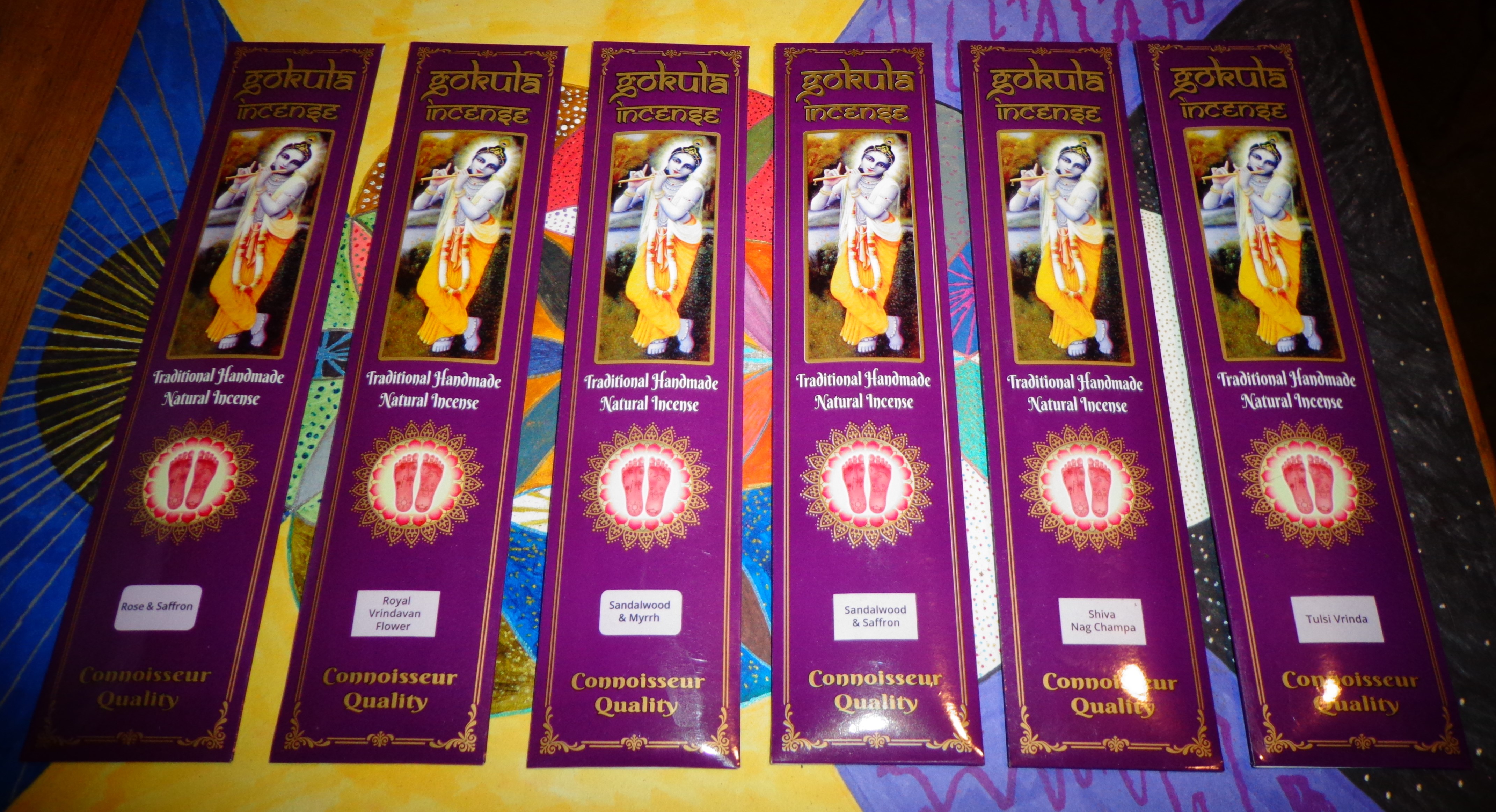 This is the last of four in a series of Gokula Incense reviews, please see the first installment for an introduction to the company.
This is the last of four in a series of Gokula Incense reviews, please see the first installment for an introduction to the company.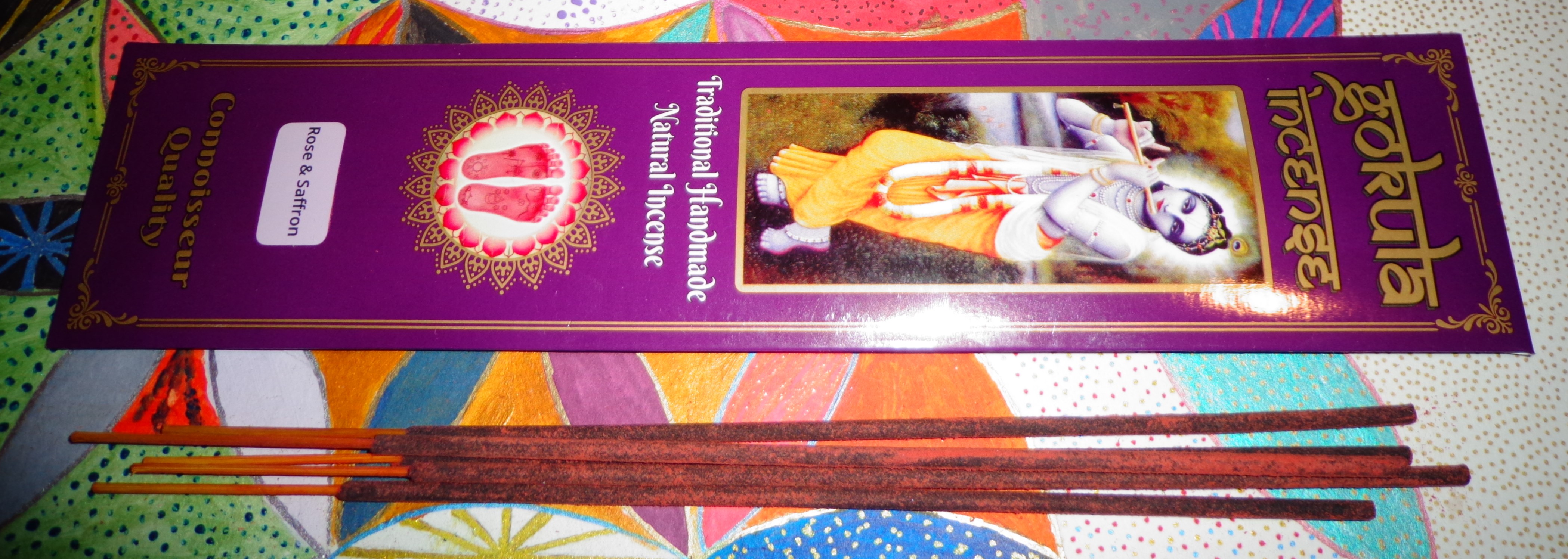
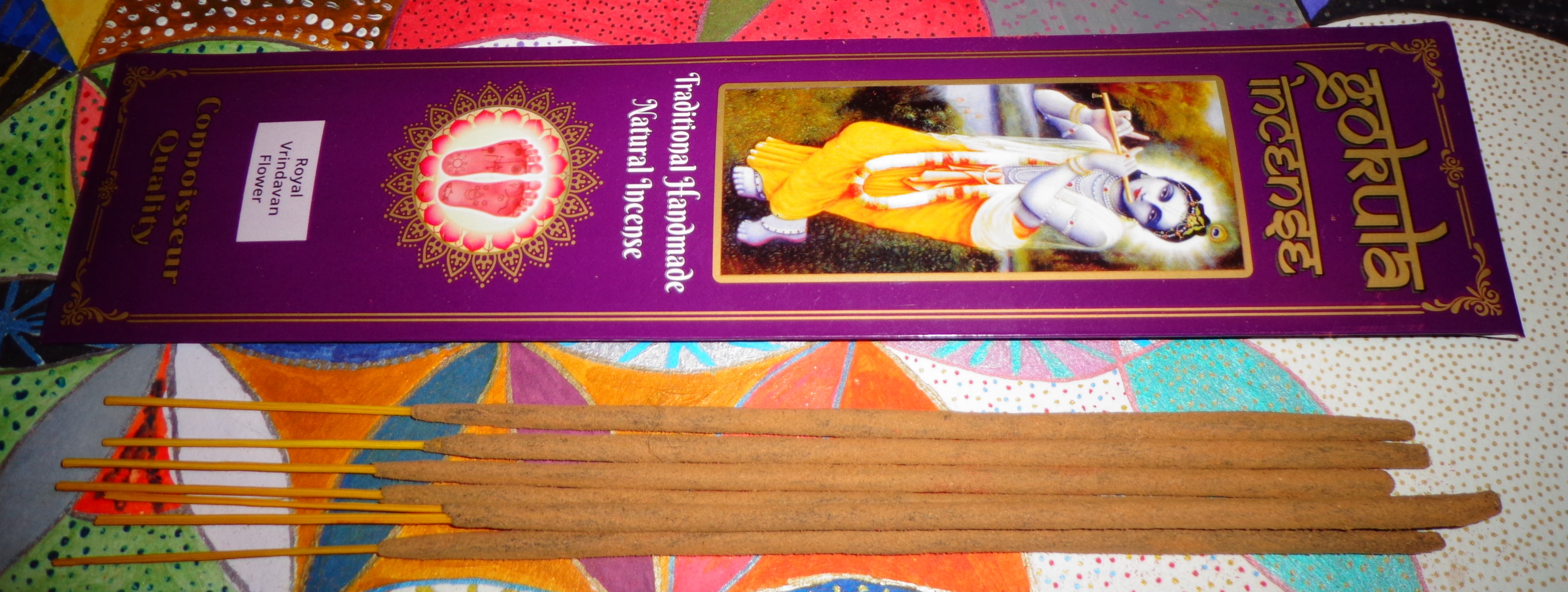 Every time I see an incense with Vrindavan in it, it’s kind of like musk or lotus, they’re so different from stick to stick that you can’t always be sure what you’re getting. But Gokula’s
Every time I see an incense with Vrindavan in it, it’s kind of like musk or lotus, they’re so different from stick to stick that you can’t always be sure what you’re getting. But Gokula’s 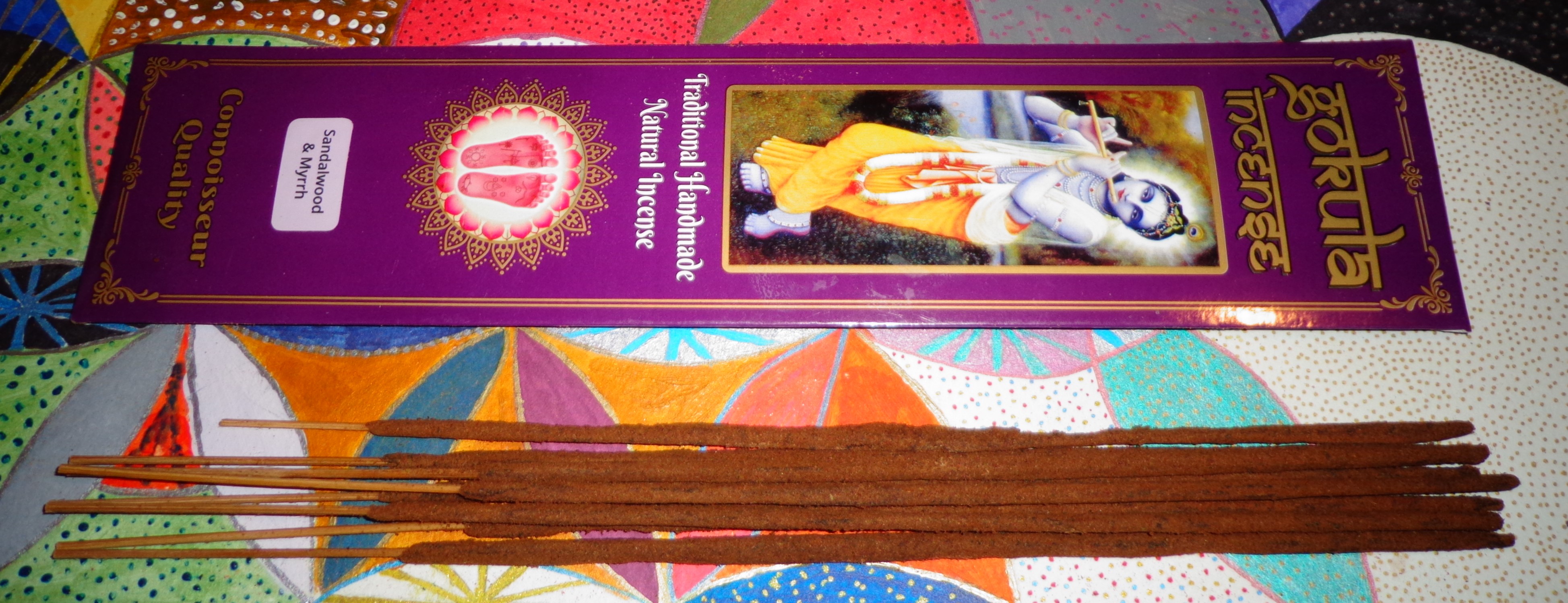 So I had almost forgot until I checked my notes but there was a slight snafu with my order (no worries the kind Gokula folks cleared it up right away) but I think there was one non-Madhavadas I did not get and then one Mahavadas I did get and that’s the
So I had almost forgot until I checked my notes but there was a slight snafu with my order (no worries the kind Gokula folks cleared it up right away) but I think there was one non-Madhavadas I did not get and then one Mahavadas I did get and that’s the 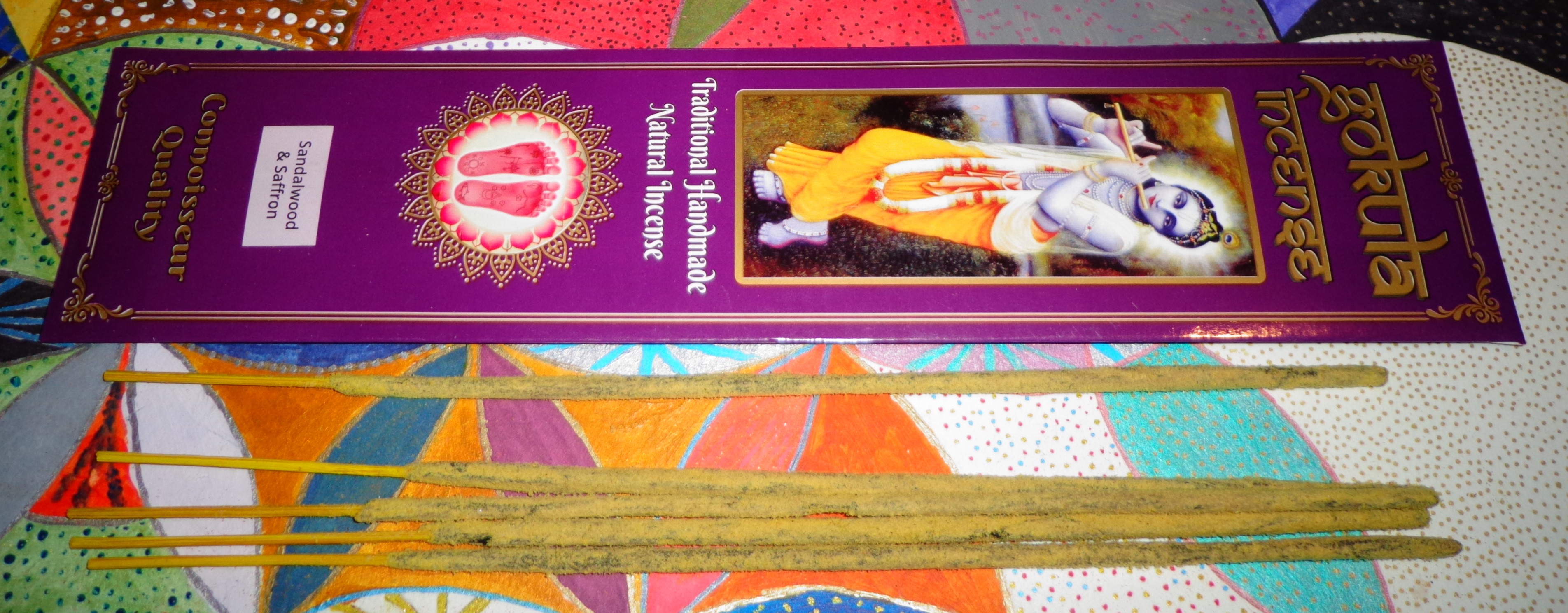 Visually, the
Visually, the 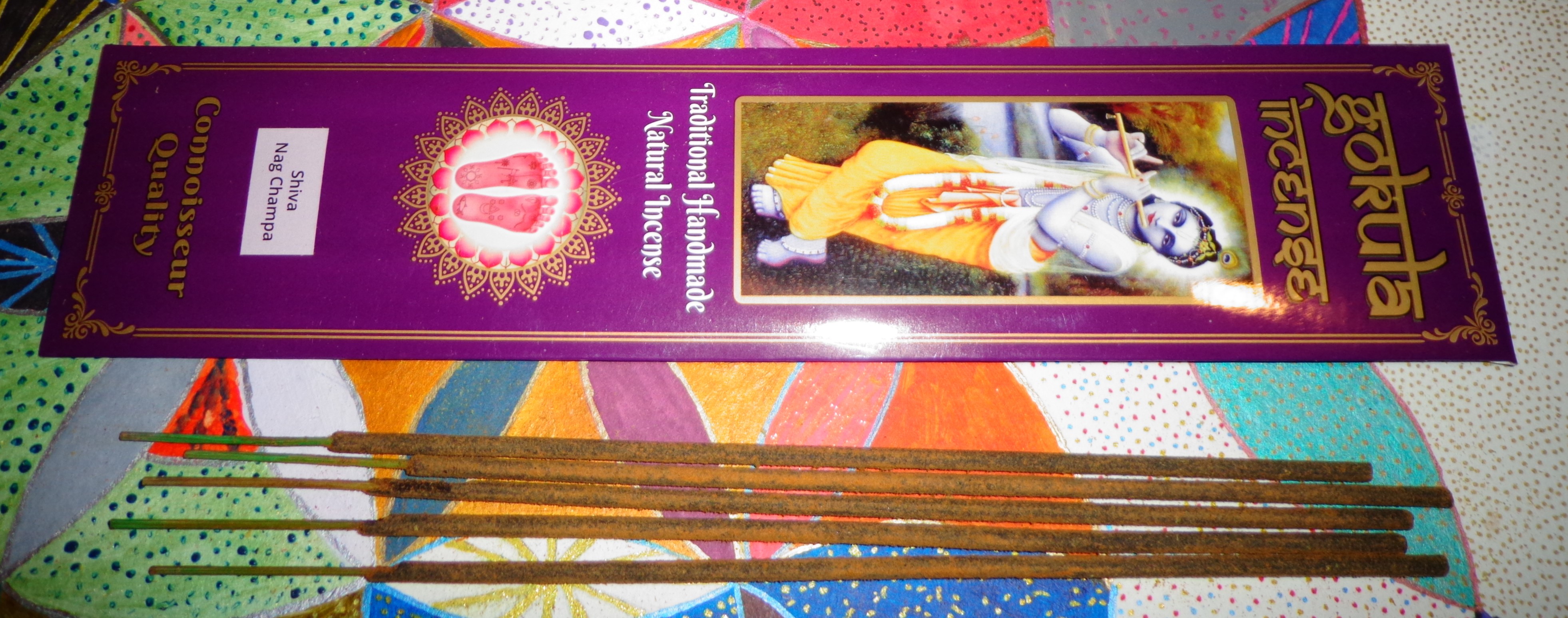 Although
Although 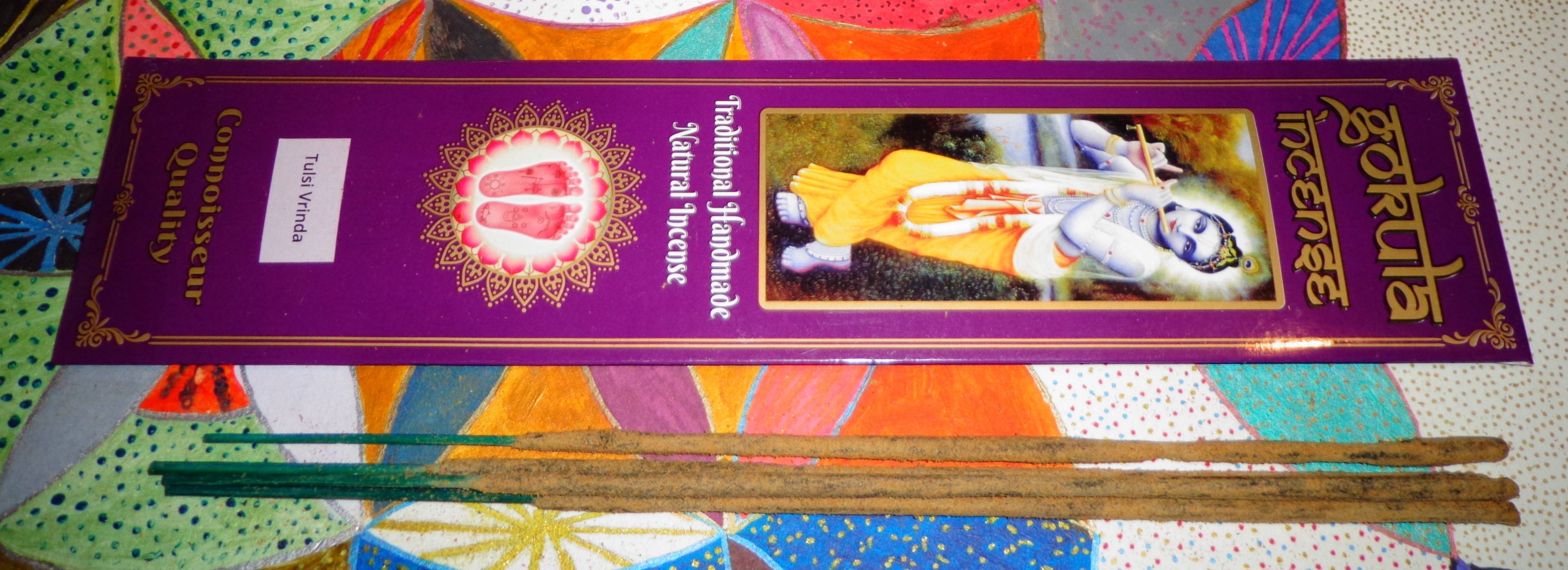
 The Western tendency to create correspondences with Eastern spiritual systems seems largely a side effect of systems like the Golden Dawn where everything from colors to astrology signs to elements to Hebrew letters to tarot cards were lined up with one another to link things up and create one sort of universal spiritual system. This has long permeated new age culture and you can see it here in this seven incense chakra line where all the packages have different colors and so forth and the scents have been created to match up with each chakra, as if working with chakras was a simple as burning incenses and holding the right crystal. But hey, marketing right? (There’s a new Facebook ad equating using their groups as a method for transcendence that is currently annoying me, but I digress.) For sure the packages are quite nice on these, and if we can reference the many gems of the
The Western tendency to create correspondences with Eastern spiritual systems seems largely a side effect of systems like the Golden Dawn where everything from colors to astrology signs to elements to Hebrew letters to tarot cards were lined up with one another to link things up and create one sort of universal spiritual system. This has long permeated new age culture and you can see it here in this seven incense chakra line where all the packages have different colors and so forth and the scents have been created to match up with each chakra, as if working with chakras was a simple as burning incenses and holding the right crystal. But hey, marketing right? (There’s a new Facebook ad equating using their groups as a method for transcendence that is currently annoying me, but I digress.) For sure the packages are quite nice on these, and if we can reference the many gems of the  The
The 
 So, up to the solar plexus level with the
So, up to the solar plexus level with the 
 The “oriental woods and amber” of
The “oriental woods and amber” of  It’s hard to get enthusiastic about the jasmine and tulasi that matches up with the
It’s hard to get enthusiastic about the jasmine and tulasi that matches up with the  And finally we get to the crown chakra with the
And finally we get to the crown chakra with the 




You must be logged in to post a comment.